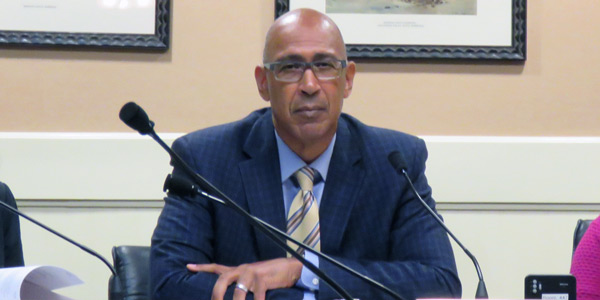By Jason Fordney
Last-minute legislation that would transform CAISO into a new regional system operator appeared to stall in the California State Senate yesterday after being kicked back to the Rules Committee.
Lawmakers drew criticism this week for moving ahead with legislation close to the end of the session that could spur the process of regionalizing CAISO starting in late 2018. The regionalization language was inserted late last week into two bills sponsored by State Assemblymember Chris Holden (D), chairman of the Assembly Committee on Utilities and Energy, which held a June hearing to look at CAISO expansion. (See California Lawmakers Take Up CAISO Expansion.)
One bill, AB 726, was amended on the Senate floor and essentially became a new bill that now requires waiver of procedural rules to be reviewed by a policy committee and then sent back to the Senate for a vote. But time is short, with the legislative session ending Friday and a heavy volume of other legislation under consideration before the legislative deadline. Similar language was inserted into a separate bill, AB 813, which was sent back to Rules Committee on Sept. 8.
The legislation could set in motion a dramatic restructuring of CAISO — an expansion that has been discussed since 2015 — by requiring the ISO’s Board of Governors to develop and approve governing documents for a new RTO by Oct. 31, 2018.
The nature of Tuesday’s amendments is not yet clear, but the proposal as written would create a Commission on Regional Grid Transformation, charged with determining whether the new governance structure adheres to principles set out in the legislation, including:
- Acknowledging and preserving state authority over matters traditionally regulated by the participating states, such as resource procurement, resource adequacy, utility planning and “other policy issues,” including those related to greenhouse gas emissions;
- Allowing participating transmission owners (PTOs) to withdraw from the RTO, including at the behest of a state of local regulatory authority; and
- Creating a process to transform the current board into a new, independent board.
The bill also stipulates the creation of committees drawn from CAISO stakeholders to advise the new ISO governing board. They would include representatives from each state with a PTO under CAISO control, TOs, transmission-dependent utilities, publicly owned utilities, consumers, environmental groups, exempt wholesale generators, emerging technologies and labor organizations.
The governance structure would not become effective until getting approval from the transformation commission, which will consist of representatives from the governor’s office, the legislature and state agencies. The commission must issue its decision by Dec. 31, 2018.
If the commission approves the expansion, the bill would void existing provisions on the formation of ISO advisory committees, the adoption of transmission maintenance, repair and replacement standards, requirements that the ISO conduct performance reviews following certain major outages, and establishing the Electricity Oversight Board.
Opponents warned that the proposed law dilutes California’s role in controlling its energy future and subjects the state to more oversight from President Trump’s appointees at FERC. While regionalization would help the state export excess renewable generation stemming from its aggressive carbon reduction policies, it would also bring coal-fired generation operated by PacifiCorp into a market that would not be governed by California entities.
The Consumer Watchdog group on Monday issued an open letter to state senators, referencing the Western Energy Crisis of 2000/01 that led to gaming, blackouts and skyrocketing electricity costs.
“In this last week of session, Gov. [Jerry] Brown is asking you to take the first steps toward a similar bargain with an even more pernicious devil, Donald Trump and other billionaires with power to sell, much of it dirty,” the group said in the letter.
The Utility Reform Network, which represents retail ratepayers, tweeted: “Is CA going to give away its energy future again? We’ve barely recovered from deregulation, [why] give away control to FERC and Warren Buffet?”
PacifiCorp, one of the holdings of Buffet’s Berkshire Hathaway Energy, and other out-of-state sellers already participate in CAISO’s Western Energy Imbalance Market (EIM), which does not function as an ISO.
CAISO favors regionalization, saying it could save up to $1.5 billion annually by 2030. (See Study Touts Benefits of CAISO Expansion.)
Brown moved to delay regionalization last summer in the face of opposition both within and outside California, but earlier this year he reaffirmed that ISO expansion could help the state address climate change. (See Gov. Brown Reaffirms Commitment to Expanded CAISO.)
AB 726 was originally written to require utilities with smart meters to provide automated alerts and notifications regarding energy usage and billing to retail customers unless they opt out, while AB 813 initially included now-deleted language regarding education.
Both bills also contain a provision that would require California electricity sellers with more than 100,000 customers to procure “tax-advantaged” renewable generation above that required by the state’s renewable portfolio standard and recover costs from retail ratepayers. The measure is intended to encourage the development of new renewable resources within the state before the expiration of federal production tax credits (PTCs) in 2020.
While sponsors of the measure acknowledge that new renewable builds are not needed in the state over the next few years because of existing surpluses and expected RPS compliance among load-serving entities, they pointed to a California Public Utilities Commission finding showing that the state will save $633 million over the long term by allowing renewable developers to take advantage of the PTC.



